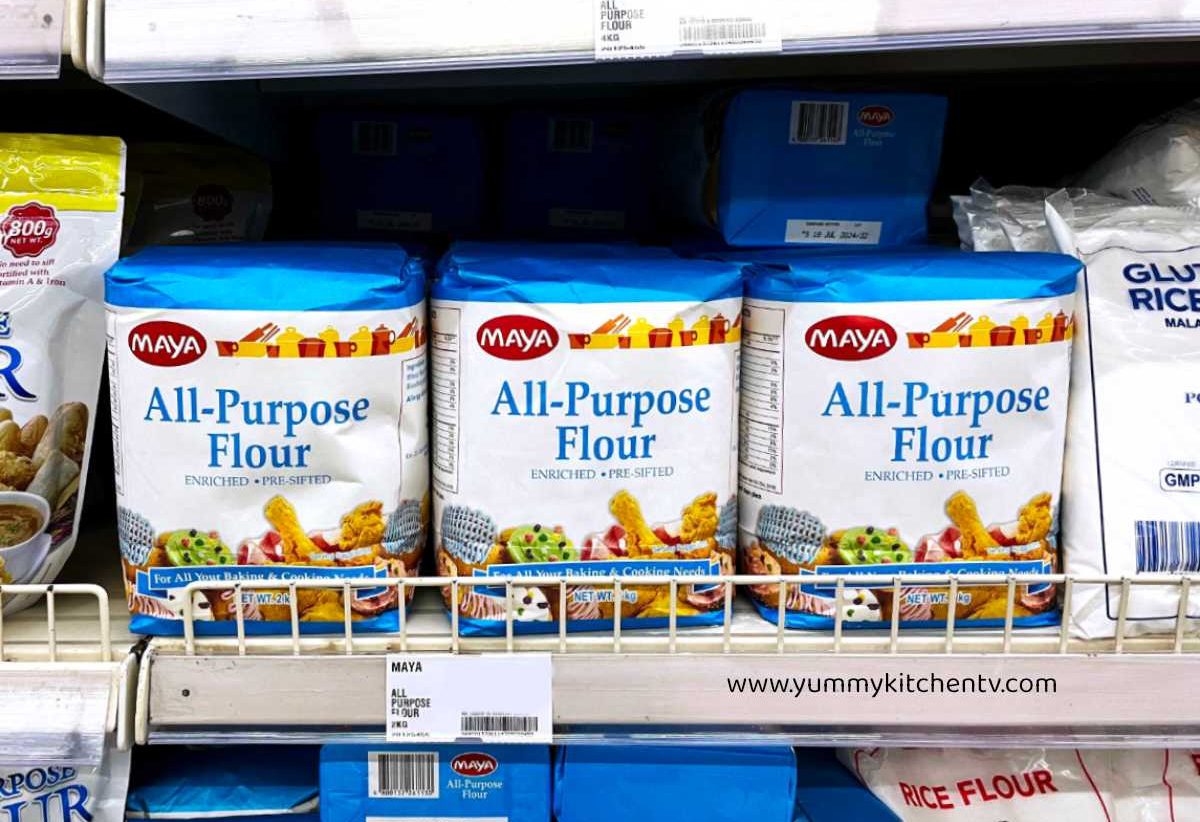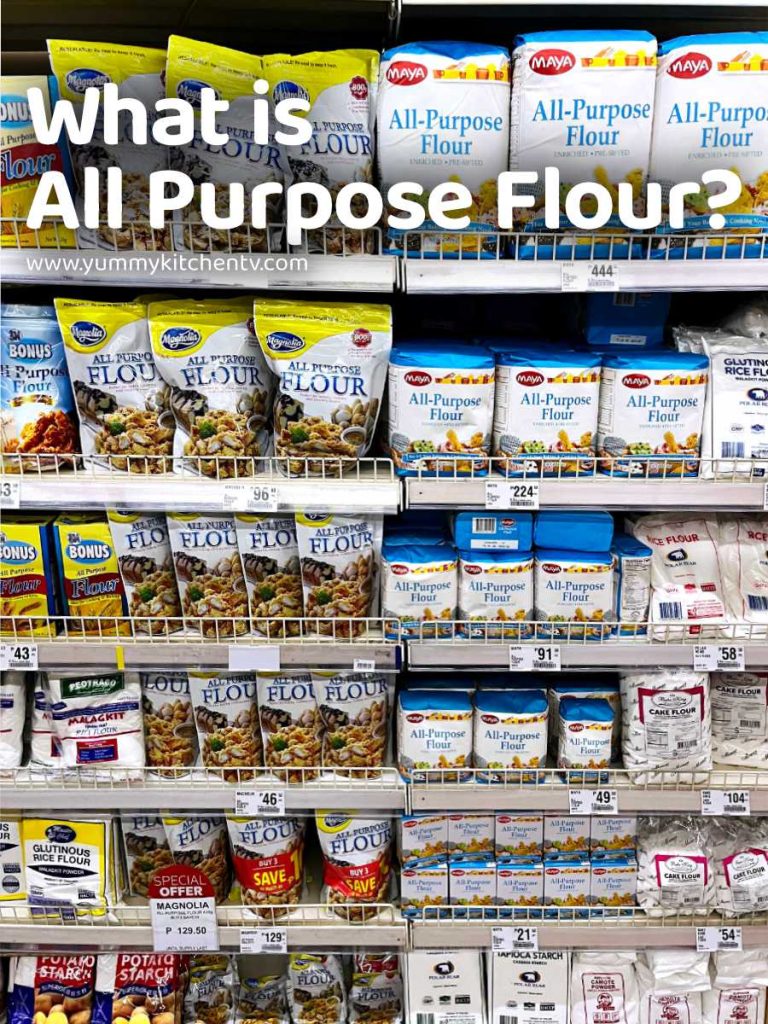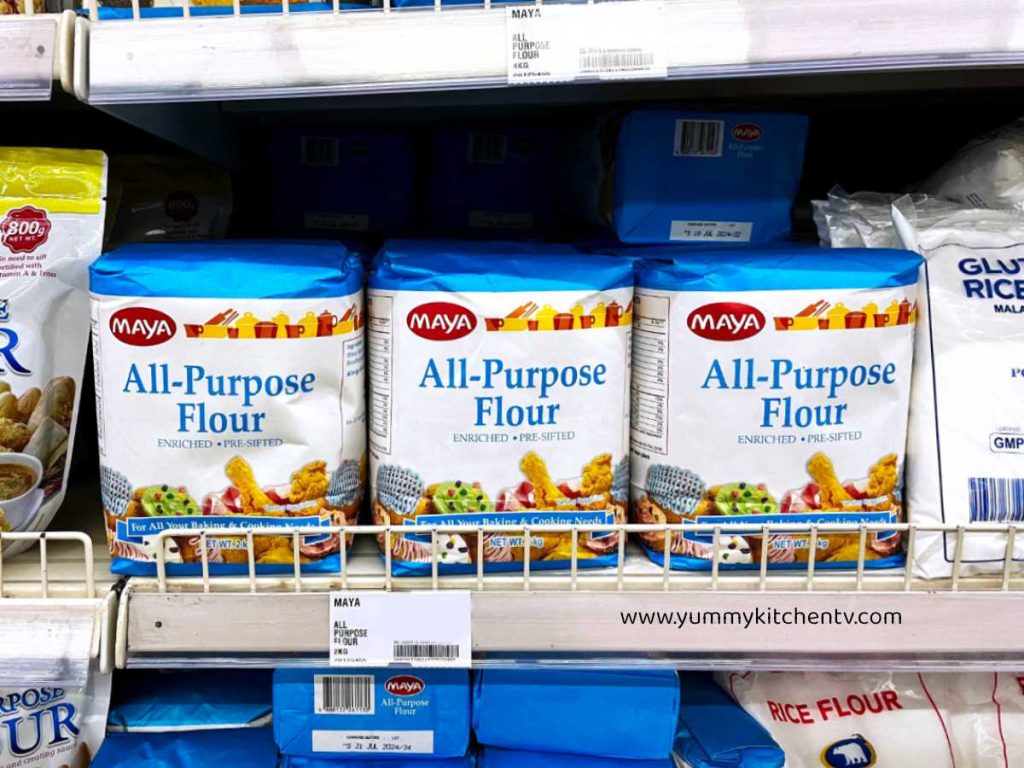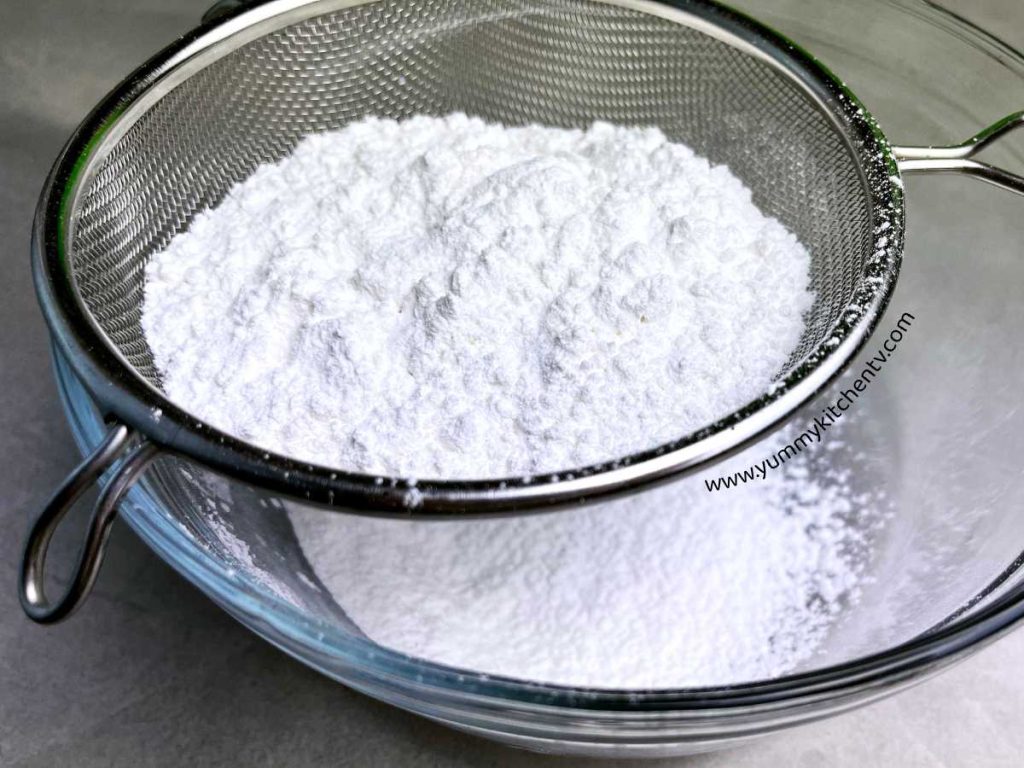All Purpose Flour is an ‘all around’ versatile type of medium-gluten flour thus the name it’s given. Made of hard or soft protein wheat flour, or a mix of both. Typically used in cooking and baking almost all goods like breads, cakes, pies, as a thickener, or batter for frying. This ingredient has been made since 3000 B.C.E, from being coarse and rough to the refined look and texture we all know refined wheat flour looks now. A component of many dishes that is still being used till today’s modern time, and will be used by the next generations. This type of flour, while many ‘healthier’ alternatives have been made, is still relevant to many recipes and livelihoods. Check out this article to find out why.
A short introduction
What exactly is All purpose flour? “All-Purpose” also known as “Plain flour”, “Regular Flour”, or “Wheat Flour”. The term “Flour” is a name to call any grains, seeds, nuts, beans, or roots grinded into powder and are used to create many different fishes, mainly bread and baked goods. This staple ingredient is used worldwide, and started from way back in history where grains were usually stoneground to mill into flour. Each culture developed their own method of grinding flour from the Ancient Egyptians using a mortar made of stone, that later became 2 stones stacked together with the stone above being able to turn using manpower, to the animal-powered grinder, then wind powered, to water powered and in more modern times machine powered.
The earliest known record of flour being made and used was around 3000 BCE by Ancient Egyptians whom were looking for ways to create a finer textured flour that they even created the sieves to separate the fine power from the coarse powder creating the first wheat or rather ‘White’ flour. Because of how much time is consumed to create this type of flour it can only be afforded by royalty. This practice was also used through medieval England but using a process called ‘boulting’ which also only the rich could afford. While the coarser wheat flour are bought by commoners, with cheaper flour made from barley or rye are bought by the poor. It started in 1870 when the practice of milling the wheat in steel rollers helped make the process easier and better to commercialize. This method helped mill the wheat faster and could also separate the different parts of the kernel (germ and bran, leaving only the soft endosperm) which helped it become more shelf-stable, the process mainly helped produce very fine white colored flour quickly and without much man-power that it was able to be sold commercially for many households to afford.
Modern day wheat flour has many varieties, and depending on which dish or baked good is to be made. Some have their own type they prefer to use from ‘Unbleached’ flour meaning that this flour is not white in color as it did not undergo bleaching, ‘Bleached flour’ which has whitening agents, ‘Refined flour or White flour’ is the usual flour you can find which has the bran and germ removed, ‘Self Rising flour’ that has added salt and leavening agents, ‘Enriched flour’ that has nutrients replaced in processing, and ‘All purpose flour’ which can be used in many different ways.
All purpose Flour Substitutes:
The biggest questions when choosing the types of flour at the grocery stores are “Can you substitute bread flour for all purpose flour ?” or “Can you use cake flour instead of all purpose flour ?” here are a list of quick answers to help you choose which type of flours or replacements are best for the dishes you might want to make:
- Self rising flour vs all purpose flour
What is the difference between All Purpose Flour Plain or Self Raising Flour? Self raising flour is not as protein rich and already has a mix of baking powder and salt. Compared to the all purpose which depending on the baked good or dish one would need to add the salt and or baking powder as needed.
- All purpose flour vs bread flour
Bread flour has a high amount of gluten and protein content making pastries and breads more chewy and fluffy. The all purpose flour to bread flour conversion is a ratio of 1:1 and vice versa.
- Cake flour vs all purpose flour
All purpose is used for almost all types of breads and pastries thus the name and it has a medium gluten content compared to bread flour and cake flour. Cake flour has low gluten content to make softer and airy desserts. to make cake flour: 1 cup all purpose flour to cake flour is 1 cup of all purpose flour removing 2 tablespoons and replacing it with 2 tablespoons of arrowroot powder or cornstarch.
- Almond flour vs all purpose
Almond flour is a popular gluten free alternative. It has a nice nutty flavor and it is slightly sweet. It’s also low in carbs, high in fiber and protein compared to regular flour. Almond flour can be a regular flour substitute with a 1:1 ratio and vice versa.
- Other Gluten free all purpose flour alternatives: are white or brown rice flour, oat flour, arrowroot flour, sorghum flour, or buckwheat flour.
Questions:
- Is all purpose flour plain flour? Yes, ‘plain flour’ is just another name, similar to ‘regular flour’.
- Is all purpose flour self raising? No, self raising flour is a combination of regular flour, salt and baking powder. All purpose is just plain/regular flour with no additives.
- Can you use self rising flour instead of all purpose? While you can use regular flour to substitute self-raising flour, the same thing cannot be said with self raising flour. When using self raising flour it can spread cookies more making it thinner and more crispy. When using this, do check or reduce some of the ingredients like baking powder or other proportions of the ingredients list to make it similar to how regular flour performs.
- What is gluten free all purpose flour? These are usually ‘grain’ type flours or flours made with seeds, grains, or nuts. Gluten-free flours are made without gluten, meaning that these are not made of wheat.
All Purpose Flour Recipes:
- Savory dishes
- Baked Goods
- Chewy Fudgy Brownies
- Low-Cost Easy Brownies
- Sweet Potato Donuts or Chocolate Donuts
- Nutella Pancakes
- Coconut Macaroons
- Banana Bread, Banana Wheat bread, or Double Chocolate Banana Bread
- An easy homemade biscuits with all-purpose flour
- Cookies
- Cakes
- Breads
- Soft and Fluffy Pandesal (a no oven version: Pandesal No-Oven)
- Ube Pandesal (Ube Cheese Pandesal recipe here)
- Chocolate Pandesal







